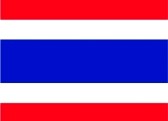All Categories







Genuine Vamavarti Shankh / Conch Shell Horn (Big Natural Blowing Shank) 16 x 8 x 7 cm
Share Tweet
of brand new stock?
or
Need this item ASAP?
Check if this is available on Amazon
or available in other sites
Send us the link so we can buy for you








About Genuine Vamavarti Shankh / Conch Shell Horn
Shankha is a conch shell which is of ritual and religious importance in both Hinduism and Buddhism. In Hinduism, the shankha is a sacred emblem of the Hindu preserver god Vishnu. It is still used as a trumpet in Hindu ritual, and in the past was used as a war trumpet. The shankha is praised in Hindu scriptures as a giver of fame, longevity and prosperity, the cleanser of sin and the abode of Lakshmi, who is the goddess of wealth and consort of Vishnu. As a symbol of water, it is associated with female fertility and serpents. The shankha is one of the eight Buddhist auspicious symbols, the Ashtamangala, and in Buddhism it represents the pervasive sound of the Buddha dharma. In Tibetan Buddhism, it is known as "dung kar". A powder made from the shell material is used in Indian Ayurvedic medicine, primarily as a cure for stomach ailments and for increasing beauty and strength. In the Western world, in the English language, the shell of this species is known as the "divine conch" or the "sacred chank". It may also be simply called a "chank" or conch. Vamavarta ("left-turned" as viewed with the aperture uppermost): This is the very commonly occurring dextral form of the species, where the shell coils or whorls expand in a clockwise spiral when viewed from the apex of the shell. In Hinduism, a Dakshinavarta shankha symbolizes infinite space and is associated with Vishnu. The Vamavarta shankha represents the reversal of the laws of nature and is linked with Shiva. The Shanka used in Vedic poojas is of the species Turbinella Pyrum dextral. This regularly available Shankha is called Vamavarti Shankha. It opens to the left and you can hold it with your right hand fingers inserted into the opening. That is when the head portion is at top and the opening is facing you, it opens to the right. It has smooth contours and 3 or more horizontal lines at the inside center opening as shown in the pictures.


























